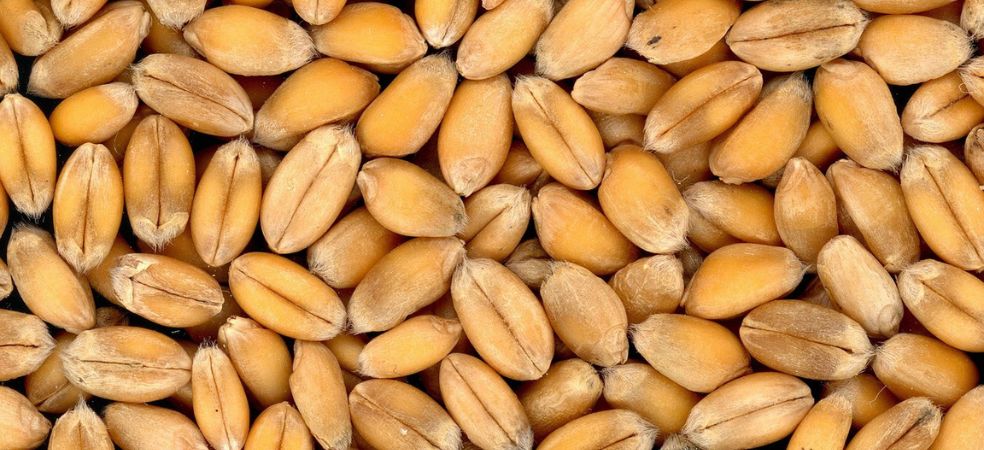A rise is being seen in the market price of mustard. See what are the prices of mustard in different mandis of Madhya Pradesh!
| Rates of Mustard in the mandis of MP | ||||
| District | Market | Variety | Minimum Price (per quintal) | Maximum Price (per quintal) |
| Shajapur | Agar | Mustard | 5075 | 5939 |
| Bhind | Alampur | Mustard | 5488 | 5855 |
| Morena | Ambaha | Mustard | 5925 | 5950 |
| Guna | Aron | Mustard | 5500 | 6000 |
| Ashoknagar | Ashoknagar | Mustard | 5501 | 5900 |
| Sehore | Ashta | Mustard | 5300 | 6010 |
| Sehore | Ashta | Mustard(Black) | 5371 | 5521 |
| Shivpuri | Badarwas | Mustard | 5670 | 5995 |
| Shivpuri | Badarwas | Mustard | 5675 | 5990 |
| Rewa | Baikunthpur | Mustard | 5590 | 5665 |
| Sagar | Bamora | Mustard | 5640 | 6900 |
| Hoshangabad | Banapura | Mustard | 5751 | 6187 |
| Sagar | Banda | Mustard | 5000 | 5600 |
| Shivpuri | Barad | Mustard | 5600 | 6206 |
| Raisen | Begamganj | Mustard | 5300 | 6105 |
| Bhopal | Berasia | Mustard | 5350 | 5780 |
| Bhopal | Berasia | Mustard(Black) | 5405 | 5590 |
| Betul | Betul | Mustard | 5576 | 5621 |
| Betul | Betul | Mustard | 5591 | 5600 |
| Betul | Betul | Mustard(Black) | 6400 | 6400 |
| Bhind | Bhind | Mustard | 5890 | 6030 |
| Rajgarh | Biaora | Mustard | 5320 | 5975 |
| Sagar | Bina | Mustard | 4611 | 7100 |
| Guna | Binaganj | Mustard | 5400 | 5750 |
| Ashoknagar | Chanderi | Mustard | 5500 | 5895 |
| Chhatarpur | Chhatarpur | Mustard | 5800 | 5862 |
| Chhatarpur | Chhatarpur | Mustard | 5700 | 5800 |
| Chhatarpur | Chhatarpur | Yellow (Black) | 5500 | 5500 |
| Damoh | Damoh | Mustard | 5590 | 5675 |
| Datia | Datia | Mustard | 5925 | 5950 |
| Dewas | Dewas | Mustard | 5319 | 5556 |
| Dindori | Dindori | Mustard(Black) | 5400 | 5400 |
| Raisen | Gairatganj | Mustard | 5420 | 6161 |
| Vidisha | Ganjbasoda | Mustard | 4000 | 7150 |
| Sagar | Garhakota | Mustard | 5230 | 5230 |
| Bhind | Gohad | Mustard | 5805 | 6130 |
| Guna | Guna | Mustard | 5520 | 5900 |
| Dewas | Haatpipliya | Mustard | 5130 | 5560 |
| Rewa | Hanumana | Mustard | 5375 | 5500 |
| Harda | Harda | Mustard | 1500 | 6241 |
| Khandwa | Harsood | Mustard | 5399 | 5601 |
| Sehore | Ichhawar | Mustard | 5400 | 6100 |
| Indore | Indore | Mustard | 5755 | 5755 |
| Ashoknagar | Isagarh | Mustard | 5530 | 5945 |
| Hoshangabad | Itarsi | Mustard | 5401 | 5585 |
| Jabalpur | Jabalpur | Mustard | 5400 | 6500 |
| Ratlam | Jaora | Mustard | 5730 | 6162 |
| Damoh | Javera | Mustard | 5405 | 5600 |
| Sehore | Jawar | Mustard | 5395 | 5500 |
| Rajgarh | Jeerapur | Mustard | 5225 | 5775 |
| Rajgarh | Jeerapur | Mustard | 5480 | 5550 |
| Morena | Kailaras | Mustard | 5850 | 6044 |
| Shajapur | Kalapipal | Mustard | 5000 | 5789 |
| Katni | Katni | Mustard | 4900 | 7951 |
| Katni | Katni | Mustard(Black) | 5510 | 5550 |
| Dewas | Khategaon | Mustard | 4500 | 5700 |
| Rajgarh | Khilchipur | Mustard | 5455 | 5660 |
| Harda | Khirakiya | Mustard | 5100 | 5470 |
| Harda | Khirakiya | Mustard(Black) | 5411 | 5512 |
| Rajgarh | Khujner | Mustard | 5105 | 5820 |
| Sagar | Khurai | Mustard | 4100 | 7350 |
| Shivpuri | Kolaras | Mustard | 5830 | 6090 |
| Shivpuri | Kolaras | Mustard | 5500 | 6080 |
| Rajgarh | Kurawar | Mustard | 3000 | 6100 |
| Rajgarh | Kurawar | Mustard-Organic | 5450 | 6125 |
| Vidisha | Kurwai | Mustard | 3481 | 5775 |
| Bhind | Lahar | Mustard | 5845 | 5895 |
| Bhind | Lahar | Mustard(Black) | 5811 | 5832 |
| Bhind | Lahar | Yellow (Black) | 5770 | 5811 |
| Gwalior | Lashkar | Mustard | 5890 | 6010 |
| Vidisha | Lateri | Mustard | 5400 | 5805 |
| Chhatarpur | LavKush Nagar(Laundi) | Mustard | 5470 | 5525 |
| Ujjain | Mahidpur | Mustard | 5725 | 5725 |
| Guna | Maksudangarh | Mustard | 5690 | 5720 |
| Neemuch | Manasa | Mustard | 5691 | 5980 |
| Mandsaur | Mandsaur | Mustard | 5430 | 5952 |
| Bhind | Mehgaon | Mustard | 5935 | 5985 |
| Shajapur | Momanbadodiya | Mustard | 5001 | 5537 |
| Morena | Morena | Mustard | 5825 | 6035 |
| Bhind | Mow | Mustard | 5400 | 5960 |
| Ashoknagar | Mungawali | Mustard | 5250 | 5895 |
| Ujjain | Nagda | Mustard | 4911 | 4911 |
| Satna | Nagod | Mustard | 5500 | 6790 |
| Shajapur | Nalkehda | Mustard | 5471 | 5732 |
| Shajapur | Nalkehda | Mustard(Black) | 5513 | 5690 |
| Rajgarh | Narsinghgarh | Mustard | 4200 | 5800 |
| Sehore | Nasrullaganj | Mustard | 5827 | 5910 |
| Raisen | Obedullaganj | Mustard | 5300 | 5749 |
| Jabalpur | Paatan | Mustard | 5105 | 5210 |
| Rajgarh | Pachaur | Mustard | 5200 | 5735 |
| Rajgarh | Pachaur | Mustard | 4800 | 5750 |
| Panna | Panna | Yellow (Black) | 6495 | 6720 |
| Damoh | Patharia | Mustard | 5450 | 5505 |
| Hoshangabad | Pipariya | Mustard | 6000 | 6261 |
| Ashoknagar | Piprai | Mustard | 5651 | 5811 |
| Shivpuri | Pohari | Mustard | 5505 | 6125 |
| Shivpuri | Pohari | Mustard(Black) | 5800 | 5800 |
| Morena | Porsa | Mustard | 5900 | 5930 |
| Guna | Raghogarh | Mustard | 5220 | 5220 |
| Raisen | Raisen | Mustard | 5200 | 5200 |
| Sagar | Rehli | Mustard | 5340 | 5340 |
| Rewa | Rewa | Mustard | 5495 | 5495 |
| Rewa | Rewa | Mustard(Black) | 5627 | 5627 |
| Morena | Sabalgarh | Mustard | 5985 | 5985 |
| Morena | Sabalgarh | Mustard(Black) | 5765 | 5975 |
| Sagar | Sagar | Mustard | 5205 | 7010 |
| Ratlam | Sailana | Mustard | 5899 | 5899 |
| Rajgarh | Sarangpur | Mustard | 5626 | 5671 |
| Rajgarh | Sarangpur | Mustard | 5331 | 5525 |
| Satna | Satna | Mustard | 5095 | 5800 |
| Sehore | Sehore | Mustard | 5400 | 6460 |
| Sehore | Sehore | Mustard(Black) | 5654 | 6250 |
| Hoshangabad | Semriharchand | Mustard | 5150 | 5150 |
| Ashoknagar | Shadora | Mustard | 5460 | 5770 |
| Shajapur | Shajapur | Mustard | 5200 | 5725 |
| Mandsaur | Shamgarh | Mustard | 5000 | 5715 |
| Mandsaur | Shamgarh | Other | 5775 | 5775 |
| Vidisha | Shamshabad | Mustard | 5000 | 5465 |
| Sheopur | Sheopurbadod | Mustard | 5740 | 5840 |
| Sheopur | Sheopurkalan | Mustard | 5831 | 5920 |
| Sheopur | Sheopurkalan | Mustard | 5800 | 5915 |
| Shivpuri | Shivpuri | Mustard | 5700 | 6050 |
| Shajapur | Shujalpur | Mustard | 5300 | 5820 |
| Raisen | Silvani | Mustard | 5955 | 5955 |
| Vidisha | Sironj | Mustard | 5375 | 5844 |
| Mandsaur | Sitmau | Mustard | 6900 | 6900 |
| Mandsaur | Sitmau | Mustard(Black) | 5401 | 5401 |
| Dewas | Sonkatch | Mustard | 5400 | 5562 |
| Shajapur | Soyatkalan | Mustard | 5625 | 5645 |
| Shajapur | Susner | Mustard | 5725 | 5725 |
| Rajgarh | Suthalia | Mustard | 5400 | 5400 |
| Ujjain | Tarana | Mustard | 5426 | 5501 |
| Tikamgarh | Tikamgarh | Mustard | 5550 | 5800 |
| Tikamgarh | Tikamgarh(F&V) | Mustard | 5550 | 5800 |
| Harda | Timarni | Mustard | 5611 | 5711 |
| Raisen | Udaipura | Mustard | 5300 | 5300 |
| Ujjain | Ujjain | Mustard | 5540 | 5571 |
| Vidisha | Vidisha | Mustard | 5600 | 7101 |
| Sheopur | Vijaypur | Mustard | 5850 | 6005 |
Source: Agmarknet
ShareTo know the information related to agriculture and the latest market price, keep reading Gramophone articles. If you liked today’s information then do share it with friends.










